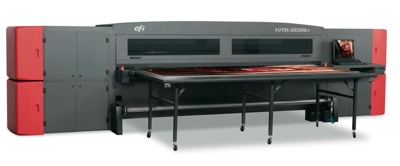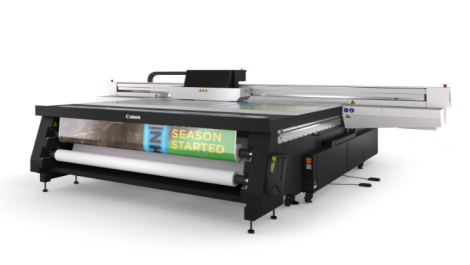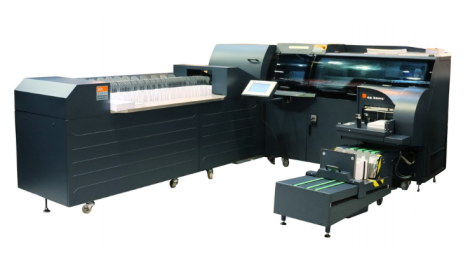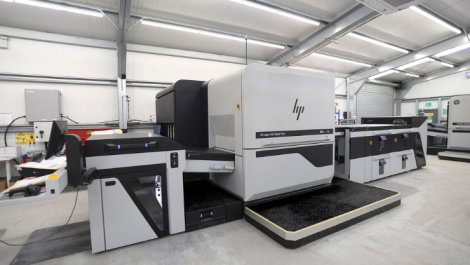EFI chief executive Guy Gecht (left – pictured here with Benny Landa) has backed up words with actions after talking about the importance of growing markets.
Is it time to consider developing a wide format offering? There are a number of questions to ask yourself first, writes technology marketing expert Rosemarie Monaco.
Major marketers extend their product offerings for two reasons: it is the fastest route to continual growth and it shields the company from revenue loss in eroding markets. So if, for example, sales of HP laptops start to slow down, there is a good chance they will make up the loss in sales of accessories or mobile printers. In fact HP is a stellar example of the value of extending the product line, as it offers products for both the consumer and business-to-business markets. The brand is as well known in the home as it is in the press room. And, when you have had a good experience with a product in one category, you are more likely to try it in another.
Printers who have added digital printing to their offset operation is an example of a tier-one product extension. While digital printing has allowed some to enter new markets, for the most part they are offering the benefits of digital printing to their current customer base. Whether you have a hybrid shop (offset + digital) or a digital-only one, it may be time to venture out to a tier-two product extension – wide format.
This is a category that will allow you to break out of your comfort zone and establish a new source of revenue. According to InfoTrends Group director Barbara Pellow, 2013 is the year digital wide format will go mainstream, meaning it will ‘evolve into a key component of companies’ marketing strategies’. She sees a 7% annual growth in wide format printing as a continuing trend. That can only be so because the demand for wide format applications is also growing at that pace. The more over-riding reason for adopting wide format printing is that it allows you to grow in three ways – you can offer your current clients new products, you can go after new customers, and you can enter new growth markets. It may be wisest to start slowly and approach your current customers first, and then once you’ve honed your capabilities, you can go after new types of companies in different markets.
Choosing Markets
You can accommodate some new markets with the same technology that you use for making billboards, signs and exhibition displays. For example, UV inkjet printers that print on both roll-to-roll and rigid materials will allow you to print directly on glass and wood panels as well as on vinyl and film. This opens the door to many new applications and new types of customers. With a versatile printer you can print museum banners as well as vehicle wraps and decorative mirrors.
Other applications such as textile printingand specialty décor, ie printing on ceramics, will require an investment in additional equipment. But it may very well be worth the time, effort and money. With this capability you can target farther reaching growth markets. One way to determine the best growth markets is to follow the lead of the more successful and innovative manufacturers.
Not too long ago Guy Gecht, chief executive of EFI talked precisely about the importance of following growth markets. After pointing out how much his company spends on R&D, he intimated that a key element of the company’s research is to seek out and invest in these growth markets.This presentation was on the occasion of EFI’s acquisition of Cretaprint, a company that makes inkjet equipment for printing on ceramic tiles. So why not let companies such as EFI do your research for you when seeking out newer growth markets?
Selecting Targets
The best place to start is with your current clients. Next to the name of each customer, list what you currently sell them and next to that what products you may be able to offer them. While it may seem obvious, putting this on paper is a great way to map out your strategy. It allows you to visualize and target their potential needs.
Talk to your customers. Find out what other type of marketing they do and how you can offer one-stop shopping with exhibition graphics, for example. Show them how they can save money by doing all their printing in one place. Next, make a list of new companies in the territory you wish to service that will be interested in your new capabilities. Put a sales plan together that includes demonstrating your wide format capabilities. This does not mean try to impress prospects with a list of new equipment. They don’t care about that; they care about the end result and how you can provide outstanding solutions for their marketing projects.
There are a number of ways to attract current and new customers. Do you want to be the one-stop shop? Do you want to show your concern for the environment? Do you want to position your company as innovative by calling attention to your speciality capabilities? Do you want to use your expertise as a digital printer as the foundation for entering new markets? These are just a few ideas of how you can position your company. The course you decide upon will help you determine the type of technologyyou will need.

The EFI Vutek GS3250LX was the first to use the company’s Cool Cure LED technology
Choosing Technology
There are a number of printers out there that will allow you to answer any or all of the above questions. For example, one of my favourites is the EFI UV LED printer with cool cure technology, which I believe comes in both two metre and 3.2 metre widths. It cures the ink at very low temperatures without compromising on quality or speed.
The benefit of this is that you can print on delicate materials because there is no issue of the curing lamps curling or warping delicate substrates. You can even print on recycled materials. So it saves you money by reducing energy consumption while helping the environment. Plus, it extends your capabilities well beyond what most other wide format printers can do.
That gives you the ability to service your current and new customers as well as many growth markets. There are many other choices out there and you don’t have to start with a superwide printer, but answer these questions when making a purchase: Will it give you the right combination of quality and speed that will allow you to respond to customer needs? What is its cost of operation? Is it flexible – will it accommodate a wide variety of substrates, giving you room for expansion? What is the printer’s droplet size? Can it reproduce small print? Can you integrate it easily into your current workflow, meaning is it compatible with your workflow software? Does it offer white ink so you can print on transparent films? And very importantly, does the company you are purchasing from have excellent service and support? Good luck, and happy wide format printing!





